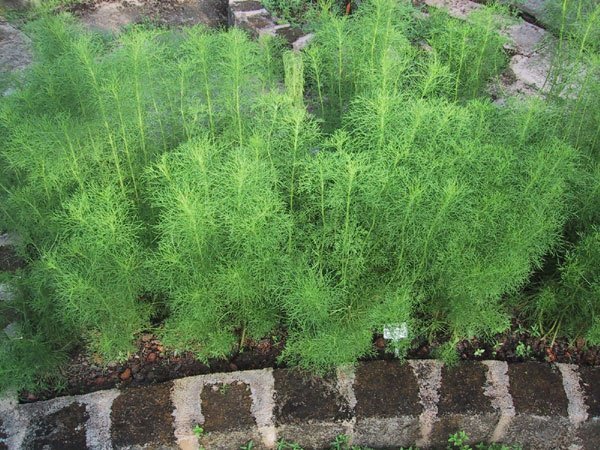Learn how to grow dill in tropics. In warm, tropical climate you require a different approach to grow this herb. Growing dill in containers is also possible, which is given in this educative guide.
Dill is an aromatic annual herb grown for its use in various cuisines. It is a wild plant that attracts butterflies and bees and other beneficial insects.
Difficulty — Easy
Soil pH — Slightly acidic to neutral
Scientific Name-– Anethum graveolens
Growing Habit

You can grow dill at any time when the temperature is around 50 – 80 F (10 – 27 C). In colder climates, it is grown in spring, summer, and up to fall in warm temperate zones. But if you live in tropics, grow dill in fall and winter.
Learn everything about growing dill in containers here!
Planting dill
Sow seeds 1/4 inches deep on a bright spot that receives morning sun. One thing you should note that dill hates to be transplanted later, so make sure you’ll sow seeds at the exact place or in a container where you would like to plant them then. Seeds will germinate in between 7 – 21 days. When seedlings are 2 – 3 inches high, thin them to 10 inches apart.
Growing dill in Containers
Dill can grow up to 3 feet high. Unlike other herbs, it has a long taproot, so it requires a deep pot. Choose at least 12 inches deep container that has sufficient drainage. In a single container, you can grow 2 -3 plants together.
Location
Dill, to grow healthy and lush, needs a Mediterranean climate. It prefers full sun. You also need to protect the plant from extreme tropical conditions, only then can you grow it successfully. Whether in pots on the balcony, patio or terrace or in the garden, ensure the plant remains on a less windy position, that is sunny. Keep the plant in the afternoon shade if the temperature rises.
Watering
Dill tolerates drought, and its flavor increases if it is allowed to be slightly “thirsty.” But in tropics, you’ll need to keep the soil relatively moist. Avoid overwatering in any case.
Also Read: How to Make Balcony Herb Garden
Soil
It can tolerate poor soil, but in fertile substrate rich-tasting dill is produced. Amend the soil by mixing plenty of aged manure or compost and sand, if needed.
Fertilizer
Generally, dill does not require frequent fertilizer, but to give a boost to plant, you can feed 5-10-5 fertilizer lightly. If you’re growing dill in containers, fertilize the plant every month with half-strength liquid fertilizer.
Mulching
Cover the plant with a 2-inch layer of organic mulch once the plants are 4 inches high. Mulching gives the plant stability, suppresses weeds, and keeps the soil moist.
Pinching and Deadheading
Pinch the plant when it grows above 6 inches tall for bushier growth. Nip off the tips regularly. Do not allow the plant to flower and seed, if you want a longer growing period.
Harvest
Harvest the leaves when the plant is 6 inches high. Once dill brings to flower, it will stop growing leaves, so if you want to keep harvesting the leaves, pinch flower buds when they are small. If you want seeds, stop deadheading. To harvest the seeds, cut the seed heads once they have turned brown.
Also Read: How to Grow Holy Basil



